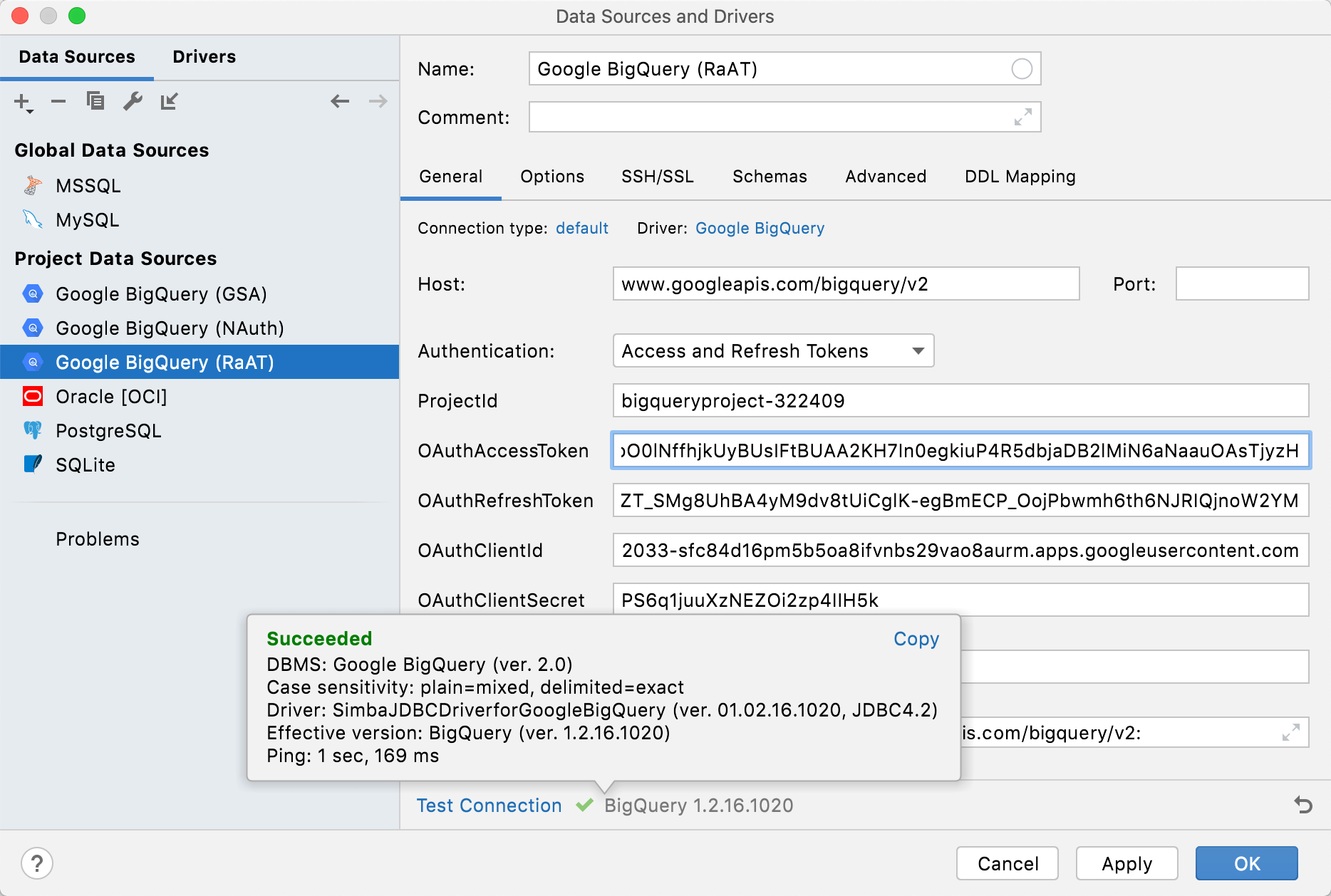Connect to BigQuery
BigQuery is a REST-based web service that allows you to run complex analytical SQL-based queries under large data sets.
To connect to BigQuery, you can use the following approaches:
You can jump to these sections if you already have a configured service account with the necessary permissions. Otherwise, consider reading Configuring the Google Cloud project.
Configuring the Google Cloud project
Step 1. Create or select a project
To create a project, select in the Navigation menu of the Google Cloud Platform. Alternatively, click the Create a project list on the Dashboard page and click New project.
To select an existing project, click a project that you want to use in the Select a project list on the Dashboard page.
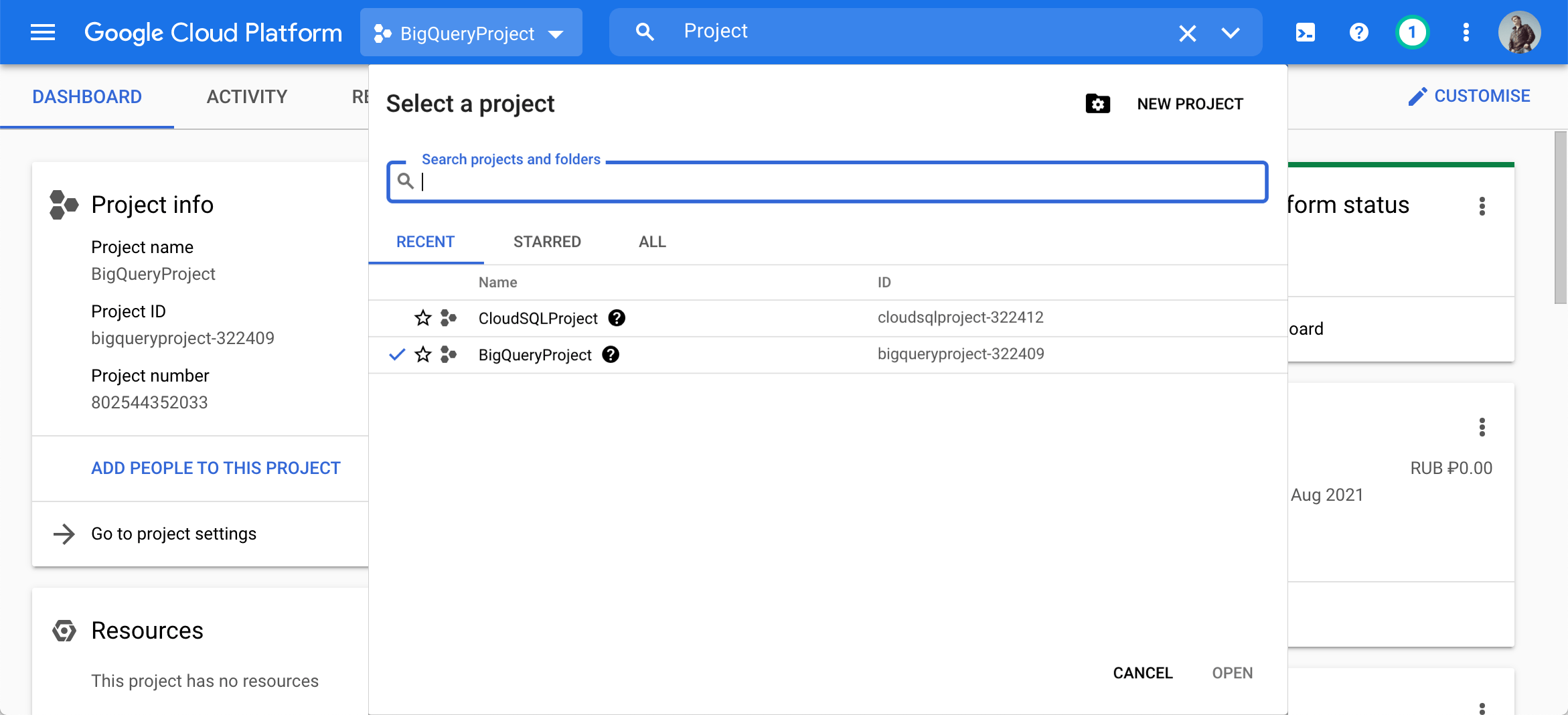
Then you need to create a service account that is going to be used by your application. For more information about service accounts, see Service accounts at cloud.google.com.
Step 2. Create a service account
In the Navigation menu of the Google Cloud Platform, select .
On the Service accounts page, click Create service account.
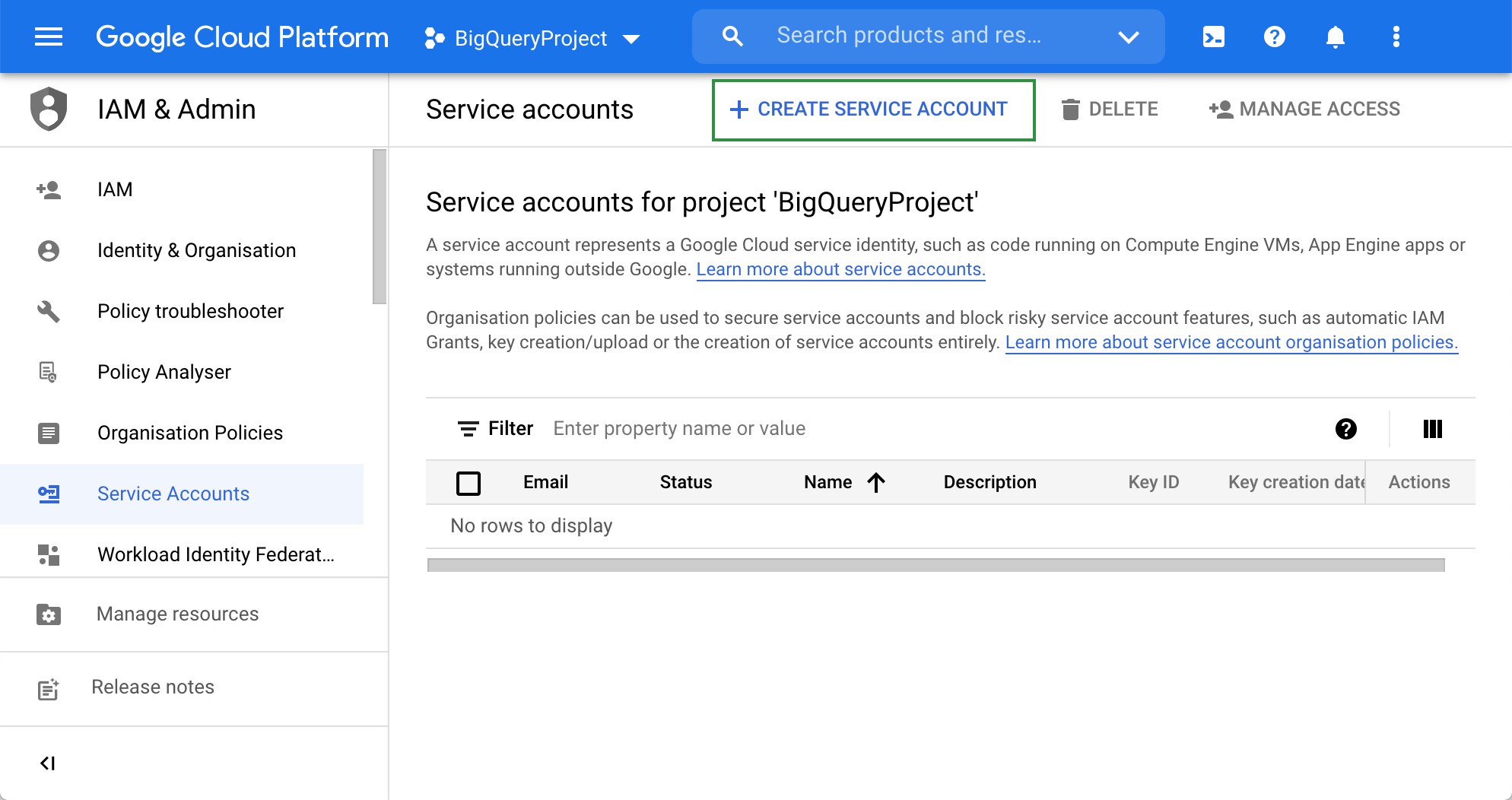
On the Service account details step in the wizard, type a project name and description.
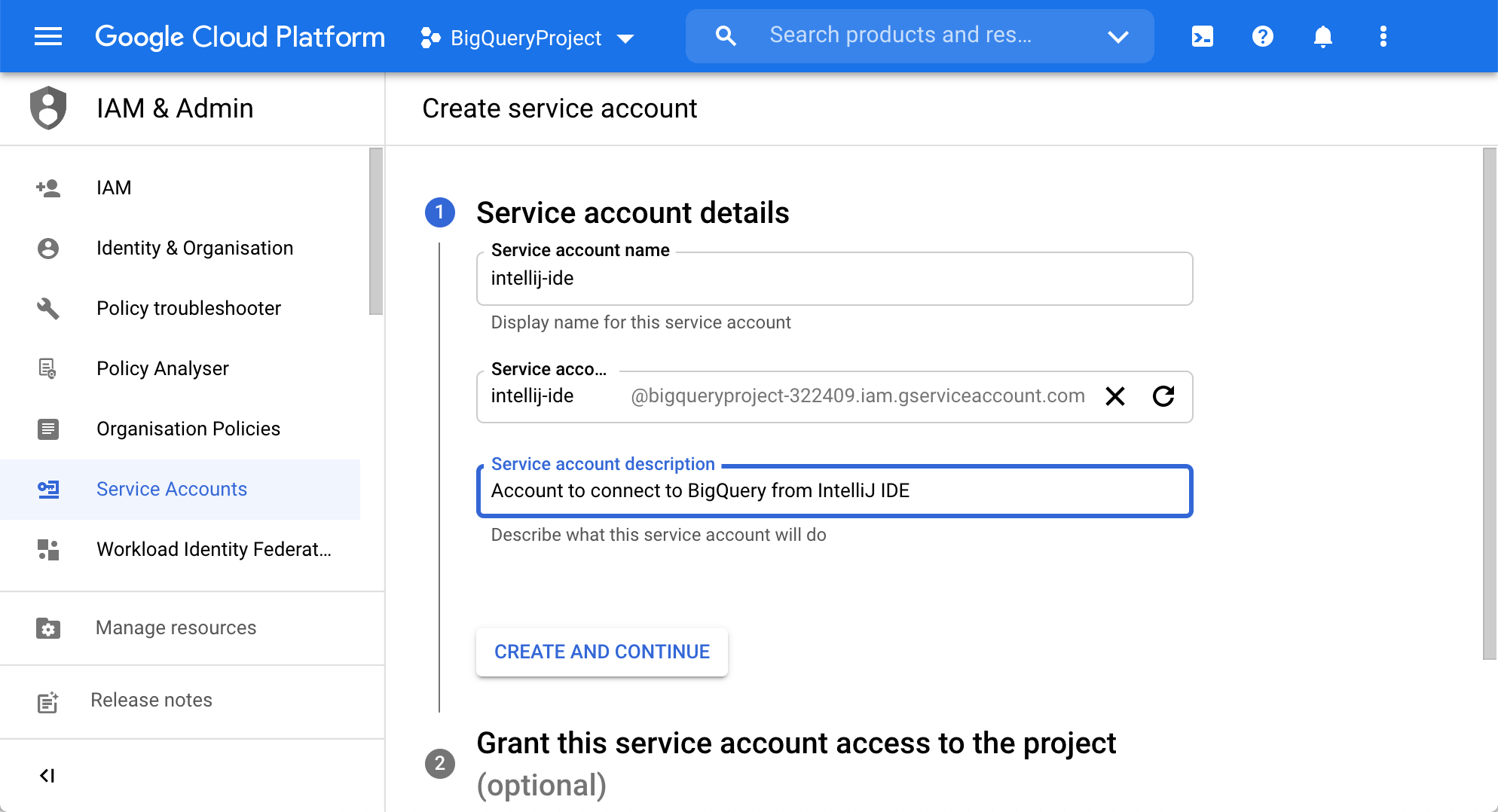
On the Grant this service account access to the project step in the wizard, select roles for this service account.
For example, for read-only access, select BigQuery Data Viewer, BigQuery Job User, and BigQuery User from the BigQuery menu. Alternatively, select for access to all resources within the project. For more information about roles and permissions, see Predefined roles and permissions at cloud.google.com.
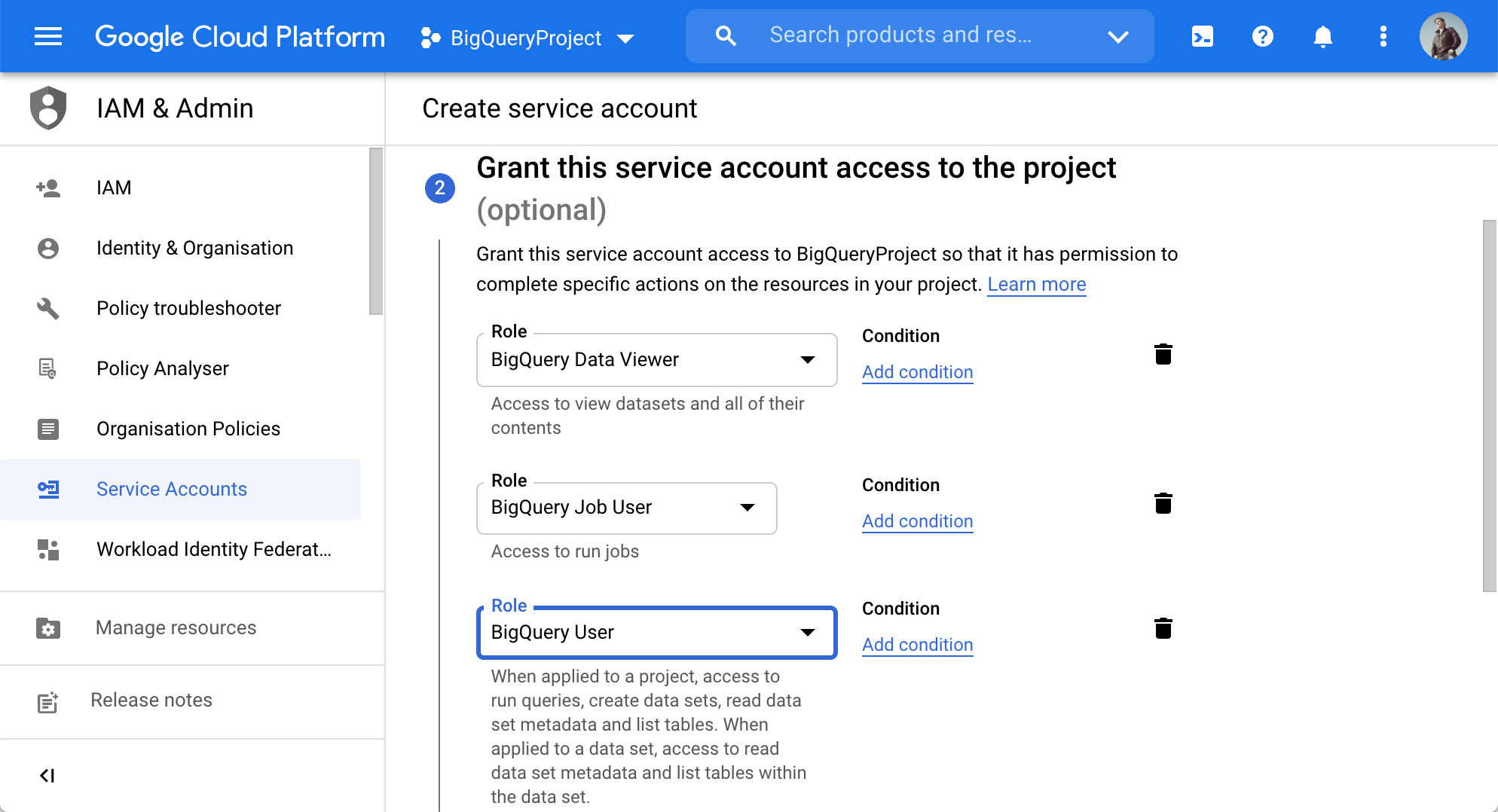
Connecting to BigQuery with a Google service account
Step 1. Generating service account keys
On the Service accounts page (), click the configuration icon in the Actions column and select Manage keys.
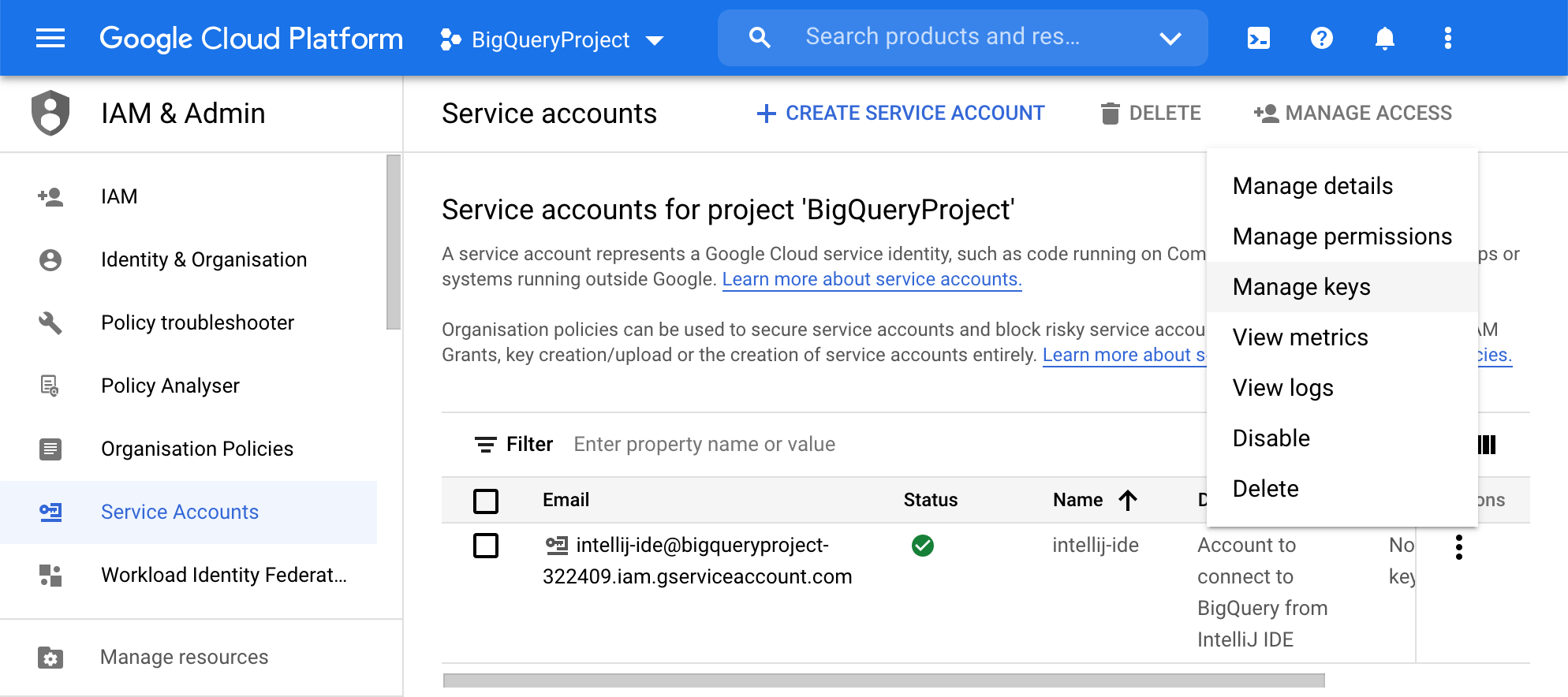
Click the Add key list and select Create new key.
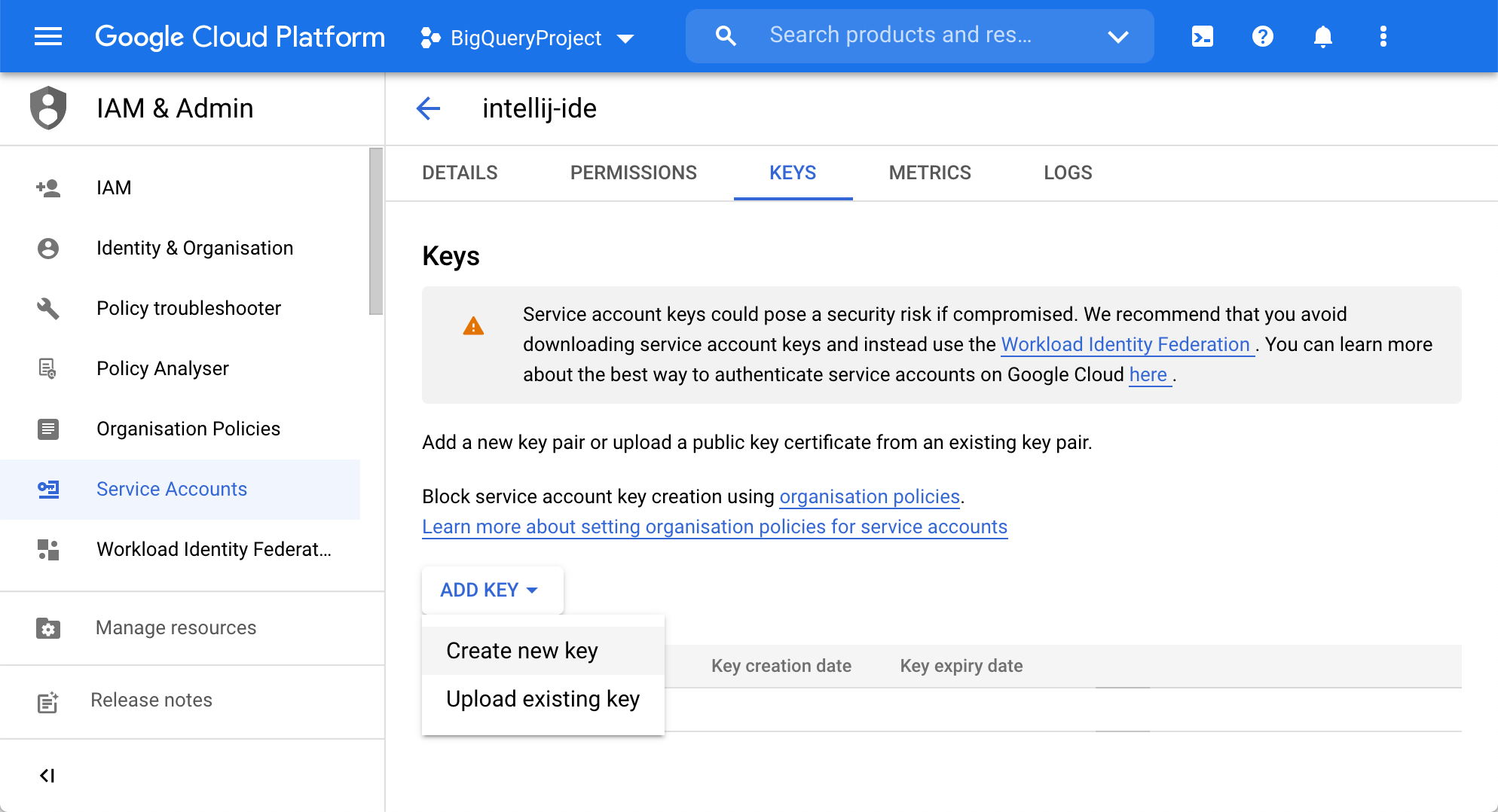
In the Create private key dialog, select JSON and click Create.
The private key download is started automatically.
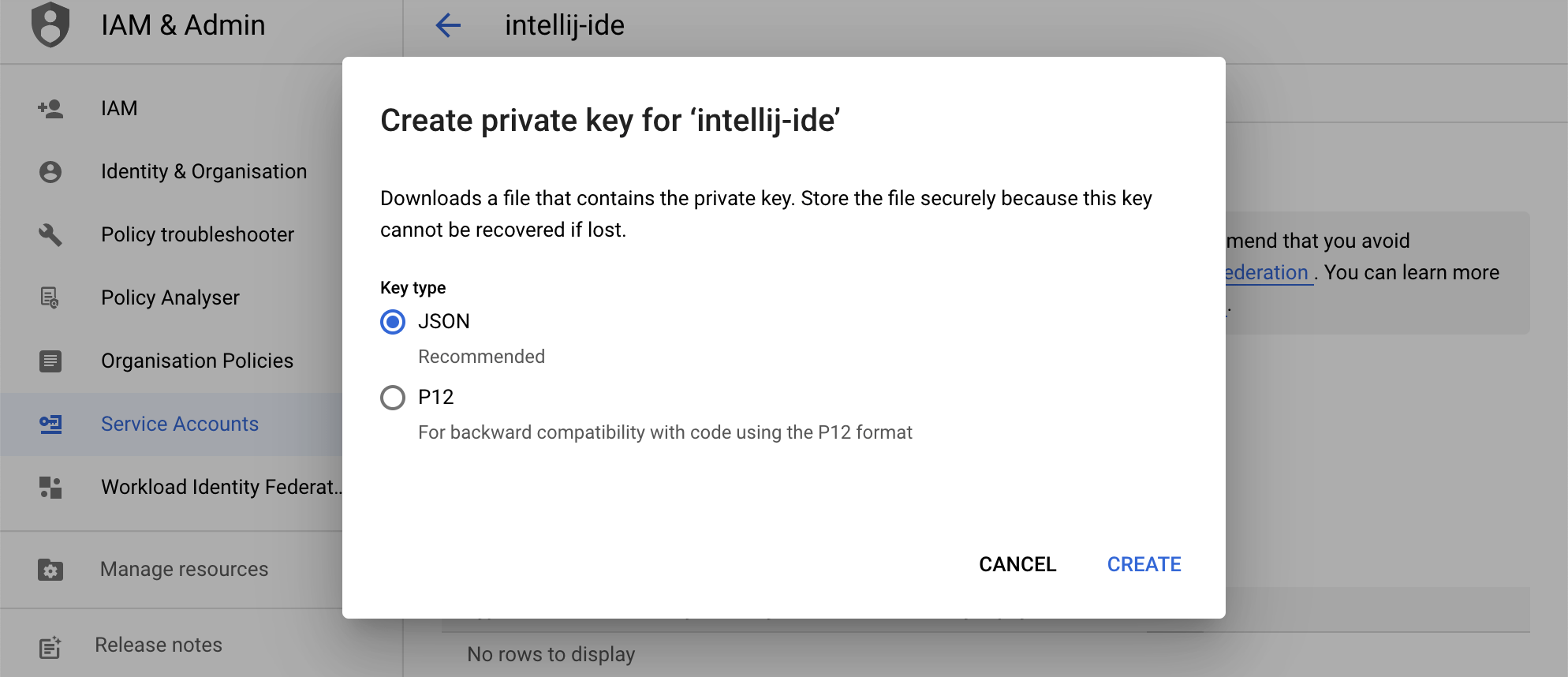
Step 2. Connecting to BigQuery from JetBrains Rider
In the Database tool window (), click the Data Source Properties icon
.
On the Data Sources tab in the Data Sources and Drivers dialog, click the Add icon (
) and select BigQuery.
At the bottom of the data source settings area, click the Download missing driver files link. As you click this link, JetBrains Rider downloads drivers that are required to interact with a database. The IDE does not include bundled drivers in order to have a smaller size of the installation package and to keep driver versions up-to-date for each IDE version.
You can specify your drivers for the data source if you do not want to download the provided drivers. For more information about creating a database connection with your driver, see Add a user driver to an existing connection.
From the Authentication list, select Google Service Account.
In the OAuthServiceAcctEmail field, type the service account email identifier.
You can get the identifier on the Service accounts page () on the Google Cloud Platform (see Generating service account keys). In our case, it is
intellij-ide@bigqueryproject-322409.iam.gserviceaccount.com.In the ProjectId field, type the project identifier.
Usually, it is a part of the service account email identifier that goes after the at sign (
@). In our case, it isbigqueryproject-322409.In the OAuthPvtKeyPath field, type the full path to the JSON key file that you downloaded on Step 3. Generating service account keys.
To ensure that the connection to the data source is successful, click the Test Connection link.
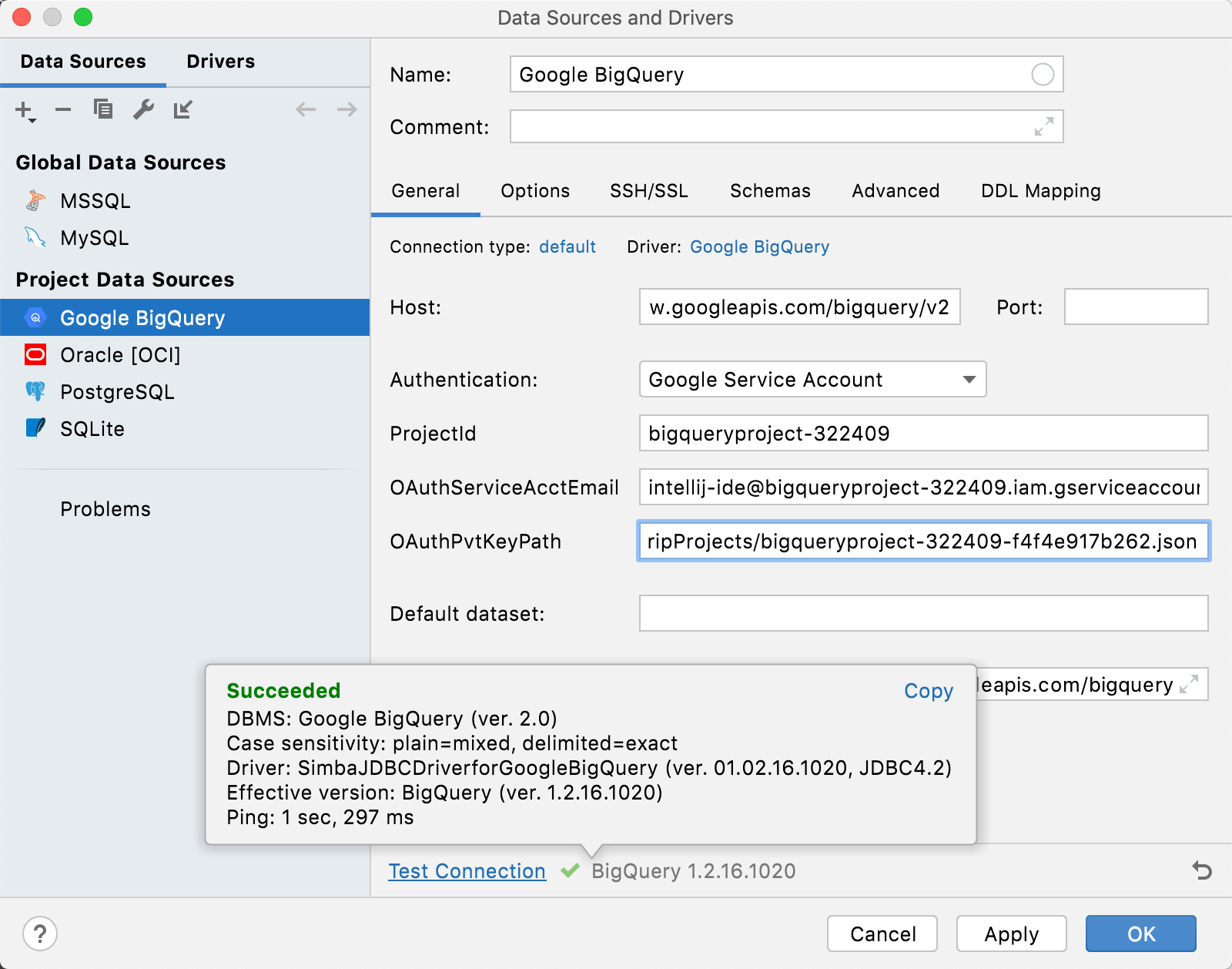
Connecting with access and refresh tokens (OAuth 2.0)
When you use OAuth 2.0 for authentication, your users are authenticated after they agree to terms that are presented to them on a user consent screen. The OAuth consent screen is a dialog that displays a notification about who requests access to the user's data and a type of this data.
Before you generate a client ID and a client secret, you need to configure the OAuth consent screen.
Step 1. Create OAuth consent screen
In the Navigation menu on the Google cloud platform, click .
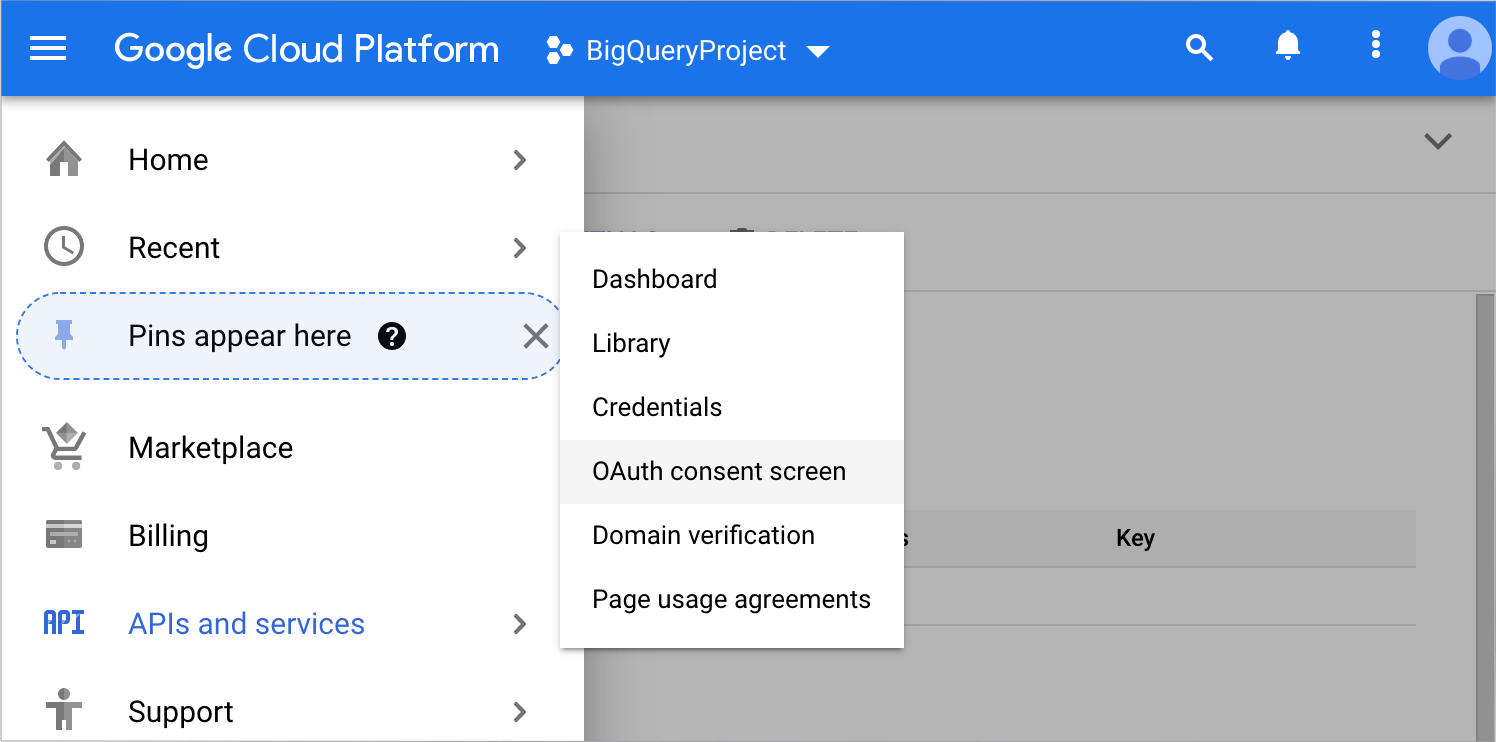
Follow the wizard and complete the configuration. For more information about user consent, see the User consent section at support.google.com.
Step 2. Getting a client ID and a client secret
In the Navigation menu on the Google cloud platform, click .
On the Credentials page, click .
From the Application type list, select Web application.
In the Authorised redirect URIs section, click Add URI and paste the following URI:
https://developers.google.com/oauthplaygroundClick Create.
In the OAuth client created window, you will see your client ID and client secret. Alternatively, you can click the created OAuth client ID configuration and get your credentials here.
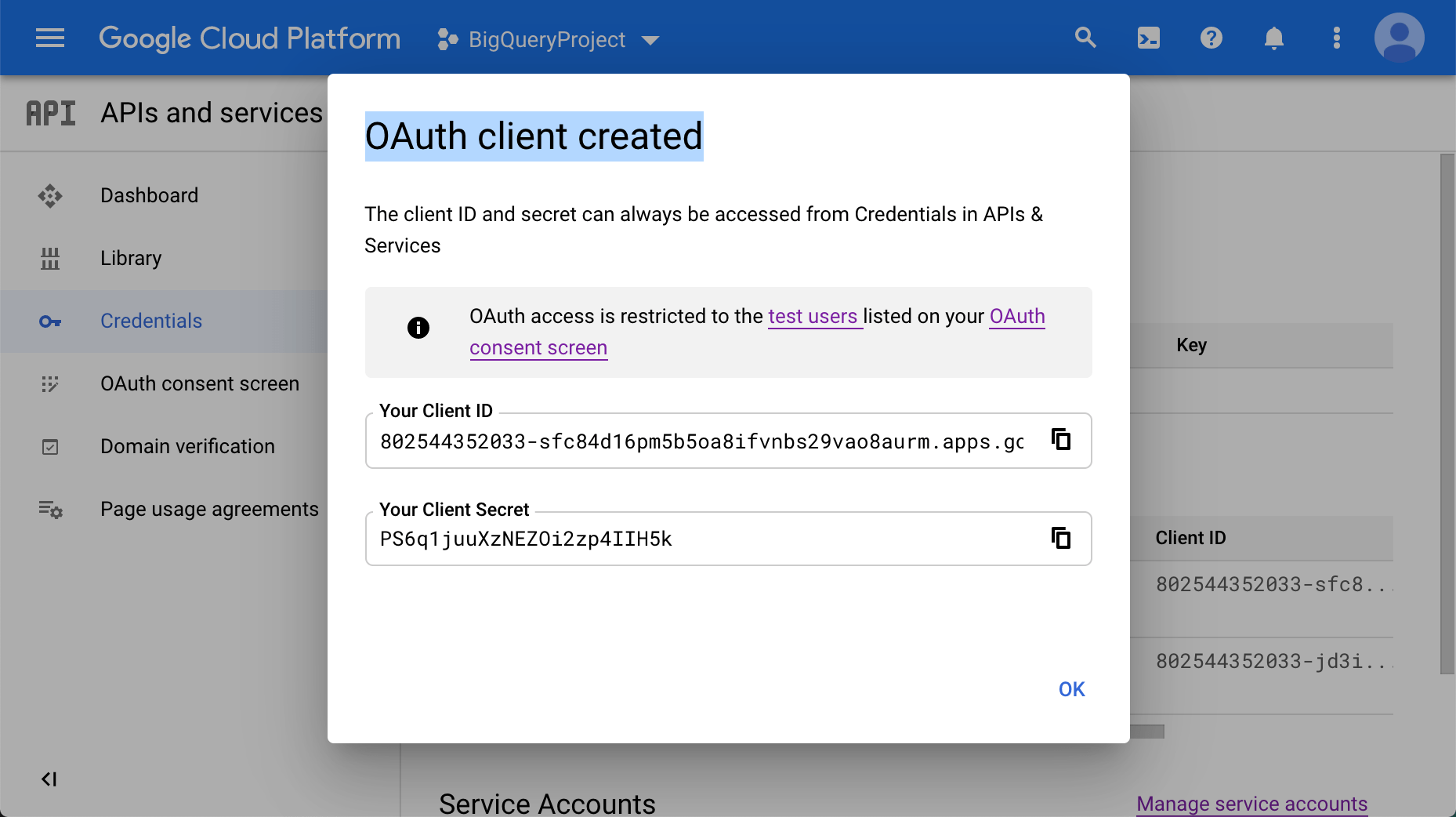
Having a client ID and a client secret, you can generate authorization code and tokens.
Step 3. Generating access and refresh tokens at OAuth 2.0 Playground
Open the OAuth 2.0 Playground in a separate browser tab.
Click the OAuth 2.0 Configuration icon, select the Use your own OAuth credentials checkbox.
Paste your client ID and client secret in OAuth Client ID and OAuth Client secret fields.
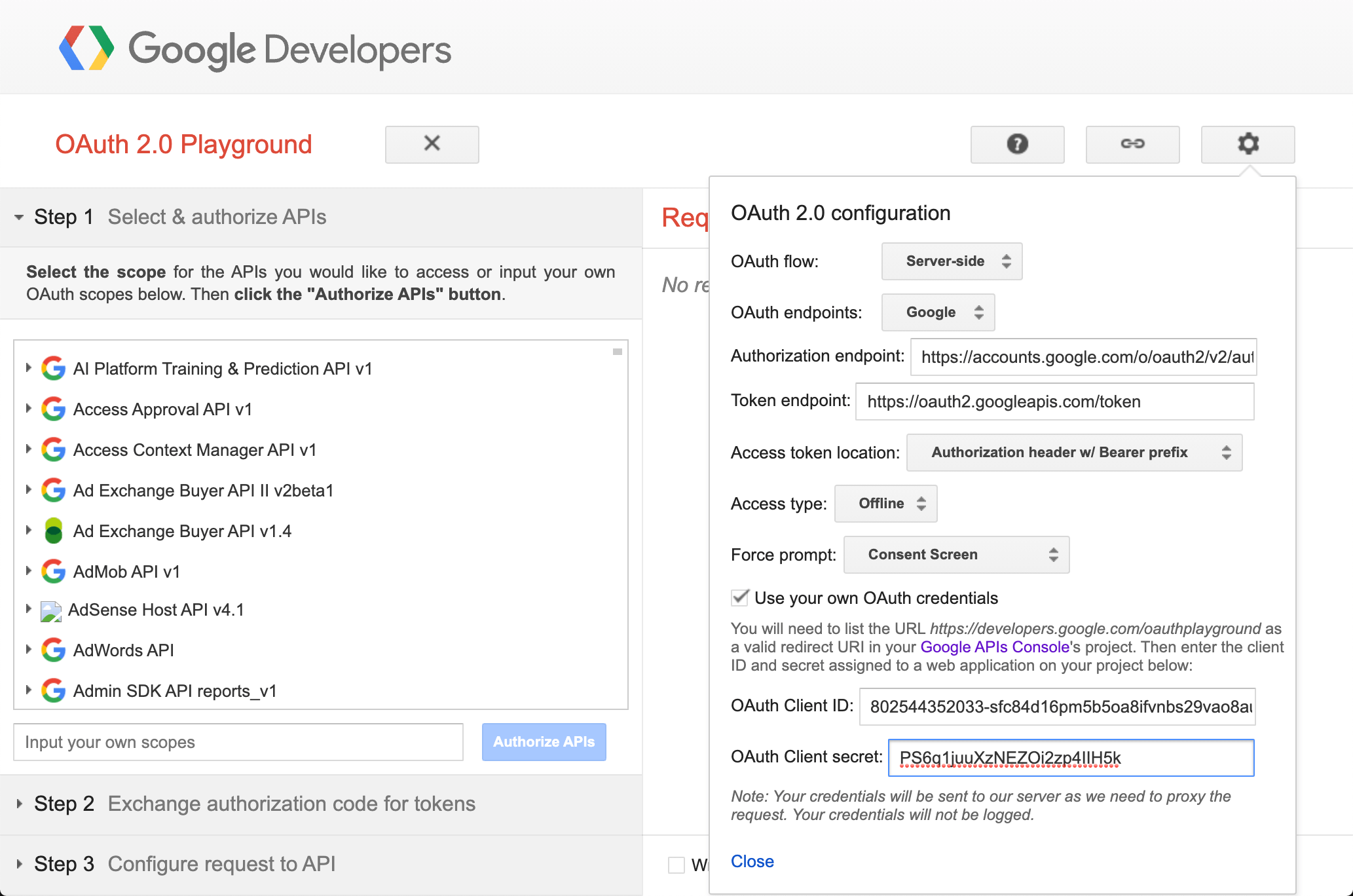
Click Close in the OAuth 2.0 Configuration window.
In the wizard on Step 1 Select & authorize APIs, select .
Click Authorize APIs.
Follow the wizard in a browser and give permissions to the application.
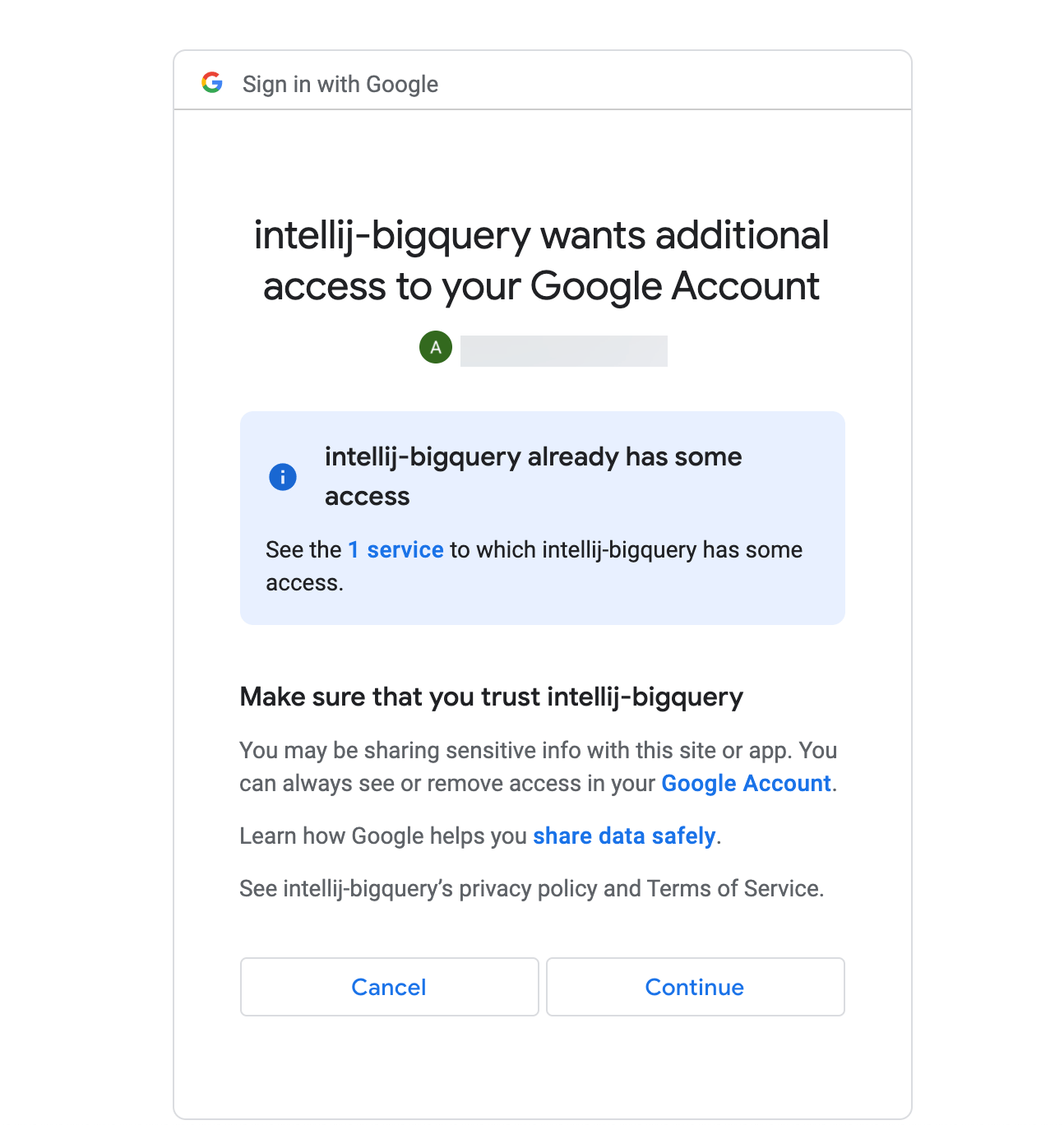
On Step 2 Exchange authorization code for tokens, click Exchange authorization code for tokens.
Copy received refresh and access tokens.
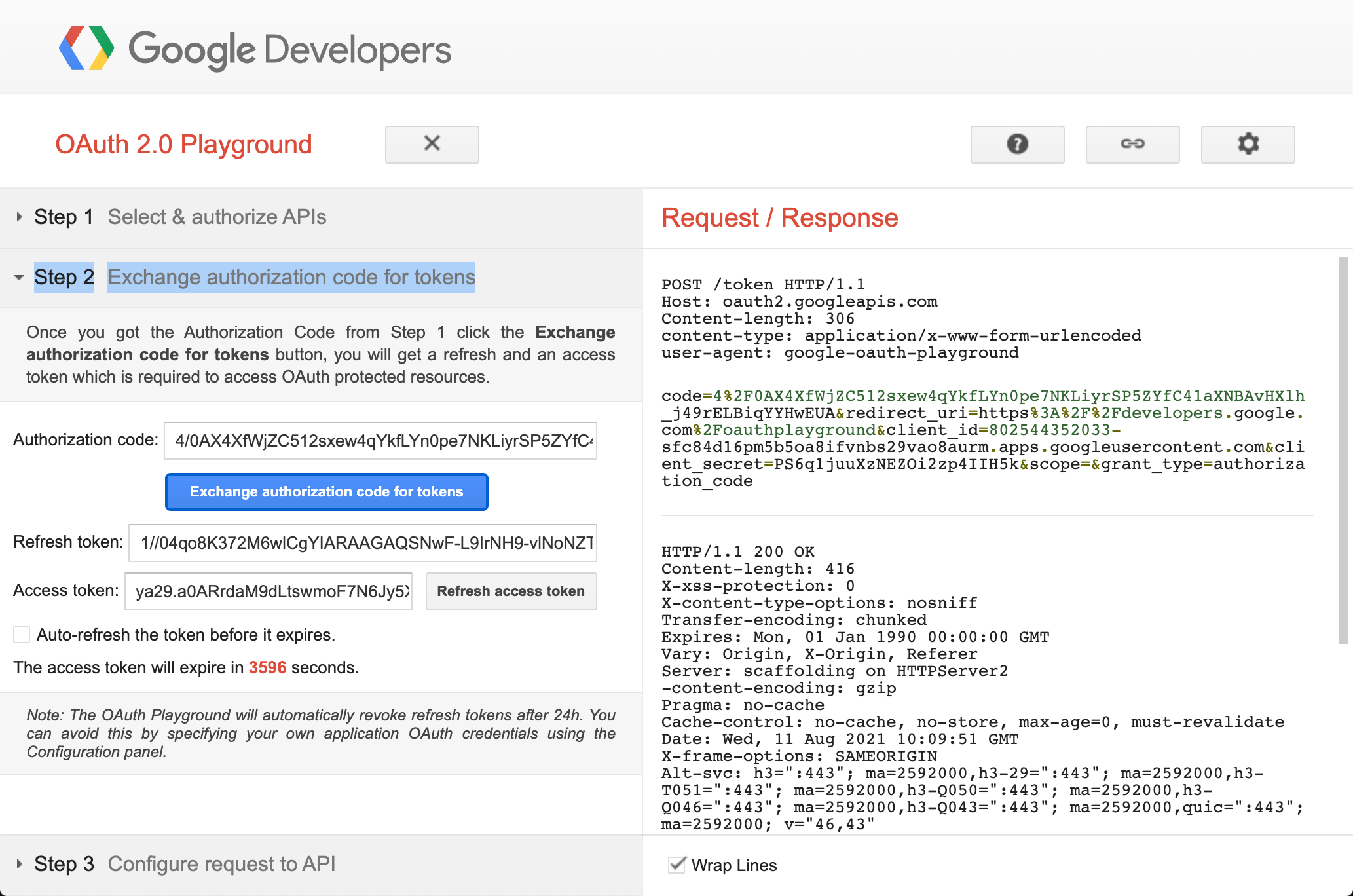
Step 4. Connect to BigQuery from JetBrains Rider
In the Database tool window (), click the Data Source Properties icon
.
On the Data Sources tab in the Data Sources and Drivers dialog, click the Add icon (
) and select BigQuery.
At the bottom of the data source settings area, click the Download missing driver files link. As you click this link, JetBrains Rider downloads drivers that are required to interact with a database. The IDE does not include bundled drivers in order to have a smaller size of the installation package and to keep driver versions up-to-date for each IDE version.
You can specify your drivers for the data source if you do not want to download the provided drivers. For more information about creating a database connection with your driver, see Add a user driver to an existing connection.
From the Authentication list, select Access and Refresh Tokens.
In the ProjectId field, type your project name.
Usually, it is a part of the service account email identifier that goes after the at sign (
@). In our case, it isbigqueryproject-322409.In the OAuthAccessToken field, paste your access token.
In the OAuthRefreshToken field, paste your refresh token.
In the OAuthClientId field, paste your client ID.
In the OAuthClientSecret field, paste your client secret.
To ensure that the connection to the data source is successful, click the Test Connection link.
